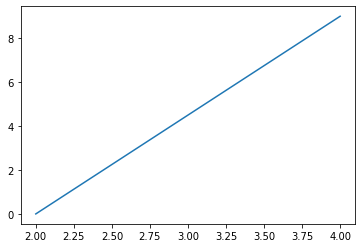NumPy¶
numpy.ravel: Flatten a NumPy Array¶
If you want to get a 1-D array of a multi-dimensional array, try numpy.ravel(arr). You can either read the elements in the same row first or read the elements in the same column first.
import numpy as np
arr = np.array([[1, 2], [3, 41]])
arr
array([[ 1, 2],
[ 3, 41]])
np.ravel(arr)
array([ 1, 2, 3, 41])
np.ravel(arr, order="F")
array([ 1, 3, 2, 41])
Use List to Change the Positions of Rows or Columns in a NumPy Array¶
If you want to change the positions of rows or columns in a NumPy array, simply use a list to specify the new positions as shown below.
arr = np.array([[1, 2, 3], [4, 5, 6], [7, 8, 9]])
arr
array([[1, 2, 3],
[4, 5, 6],
[7, 8, 9]])
new_row_position = [1, 2, 0]
new_arr = arr[new_row_position, :]
new_arr
array([[4, 5, 6],
[7, 8, 9],
[1, 2, 3]])
Difference between NumPy’s All and Any Methods¶
If you want to get the row whose ALL values satisfy a certain condition, use NumPy’s all method.
a = np.array([[1, 2, 1], [2, 2, 5]])
# get the rows whose all values are fewer than 3
mask_all = (a < 3).all(axis=1)
a[mask_all]
array([[1, 2, 1]])
To get the row whose AT LEAST one value satisfies a certain condition, use NumPy’s any method.
mask_any = (a < 3).any(axis=1)
a[mask_any]
array([[1, 2, 1],
[2, 2, 5]])
Double numpy.argsort: Get Rank of Values in an Array¶
If you want to get the index of the sorted list for the original list, apply numpy.argsort() twice.
a = np.array([2, 1, 4, 7, 3])
# Get rank of values in an array
a.argsort().argsort()
array([1, 0, 3, 4, 2])
In the example above, 1 is the smallest value so it is indexed 0. 2 is the second-largest value to it is indexed 1.
Get the index of the max value in a NumPy array¶
To get the index of the max value in a NumPy array, use np.argmax. This can be helpful to get the highest probability in an array of probabilities.
a = np.array([0.2, 0.4, 0.7, 0.3])
np.argmax(a)
2
np.where: Replace Elements of a NumPy Array Based on a Condition¶
If you want to replace elements of a NumPy array based on a condition, use numpy.where.
arr = np.array([[1, 4, 10, 15], [2, 3, 8, 9]])
# Multiply values that are less than 5 by 2
np.where(arr < 5, arr * 2, arr)
array([[ 2, 8, 10, 15],
[ 4, 6, 8, 9]])
array-to-latex: Turn a NumPy Array into Latex¶
!pip install array-to-latex
Sometimes you might want to use latex to write math. You can turn a NumPy array into latex using array-to-latex.
import array_to_latex as a2l
a = np.array([[1, 2, 3], [4, 5, 6]])
latex = a2l.to_ltx(a)
latex
\begin{bmatrix}
1.00 & 2.00 & 3.00\\
4.00 & 5.00 & 6.00
\end{bmatrix}
I copied and pasted the output of array-to-latex to the Markdown cell of Jupyter Notebook, and below is the output.
\begin{bmatrix} 1.00 & 2.00 & 3.00\ 4.00 & 5.00 & 6.00 \end{bmatrix}
NumPy Comparison Operators¶
If you want to get elements of a NumPy array that are greater, smaller, or equal to a value or an array, simply use comparison operators such as <, <=, >, >=, ==.
a = np.array([1, 2, 3])
b = np.array([4, 1, 2])
a < 2
array([ True, False, False])
a < b
array([ True, False, False])
a[a < b]
array([1])
NumPy.linspace: Get Evenly Spaced Numbers Over a Specific Interval¶
If you want to get evenly spaced numbers over a specific interval, use numpy.linspace(start, stop, num). The code below shows a use case of the numpy.linspace method.
import matplotlib.pyplot as plt
x = np.linspace(2, 4, num=10)
x
array([2. , 2.22222222, 2.44444444, 2.66666667, 2.88888889,
3.11111111, 3.33333333, 3.55555556, 3.77777778, 4. ])
y = np.arange(10)
plt.plot(x, y)
plt.show()

NumPy.testing.assert_almost_equal: Check If Two Arrays Are Equal up to a Certain Precision¶
Sometimes, you might only want to check if two arrays are equal up to a certain precision. If so, use numpy.testing.assert_almost_equal.
from numpy.testing import assert_almost_equal, assert_array_equal
a = np.array([[1.222, 2.222], [3.222, 4.222]])
test = np.array([[1.221, 2.221], [3.221, 4.221]])
assert_almost_equal(a, test, decimal=2)
assert_array_equal(a, test)
---------------------------------------------------------------------------
AssertionError Traceback (most recent call last)
/tmp/ipykernel_58623/1850860365.py in <module>
5 assert_almost_equal(a, test, decimal=2)
6
----> 7 assert_array_equal(a, test)
[... skipping hidden 1 frame]
~/book/venv/lib/python3.8/site-packages/numpy/testing/_private/utils.py in assert_array_compare(comparison, x, y, err_msg, verbose, header, precision, equal_nan, equal_inf)
842 verbose=verbose, header=header,
843 names=('x', 'y'), precision=precision)
--> 844 raise AssertionError(msg)
845 except ValueError:
846 import traceback
AssertionError:
Arrays are not equal
Mismatched elements: 4 / 4 (100%)
Max absolute difference: 0.001
Max relative difference: 0.000819
x: array([[1.222, 2.222],
[3.222, 4.222]])
y: array([[1.221, 2.221],
[3.221, 4.221]])